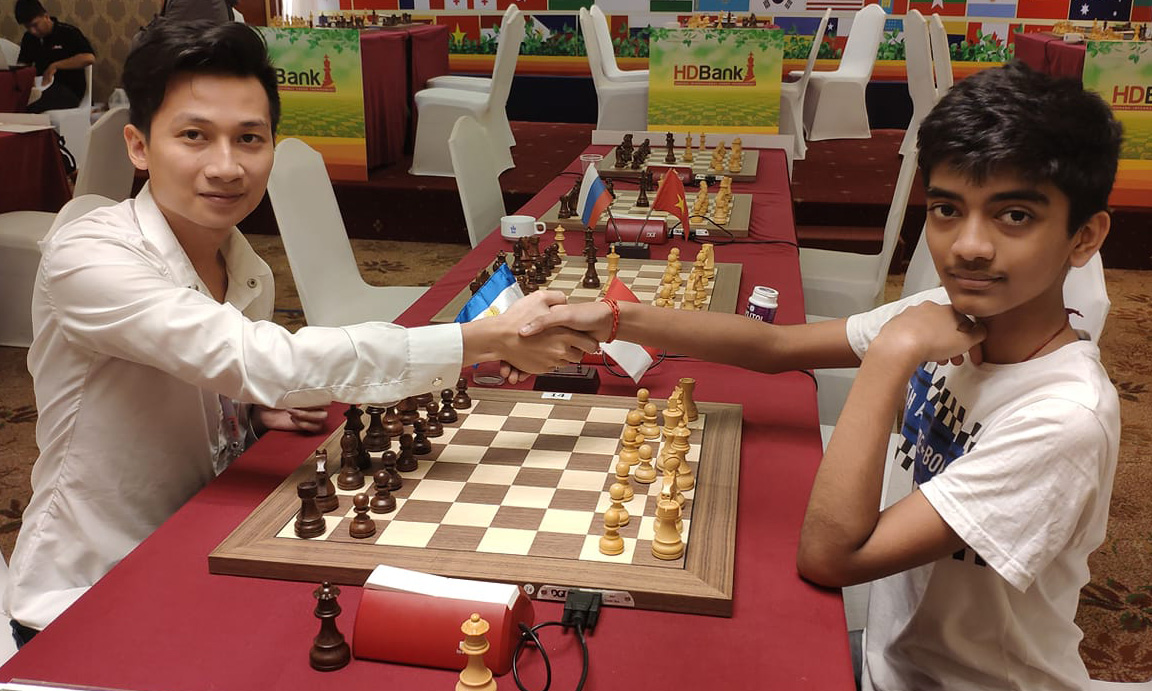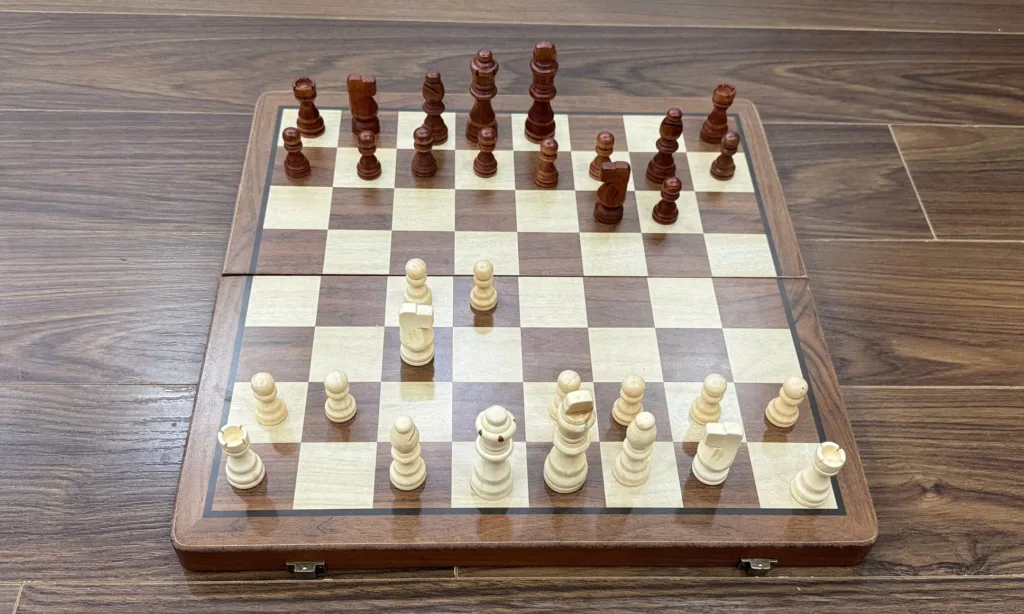The Nimzo-Indian Defense is one of the most respected openings in chess. Named after Aron Nimzowitsch, it blends classical control with hypermodern principles, challenging White’s center and development early with a well-timed pin.
It begins with:
- d4 Nf6
- c4 e6
- Nc3 Bb4
This third move defines the Nimzo-Indian. Black doesn’t contest the center immediately with pawns, but instead pins the knight on c3, directly threatening White’s control of the critical e4-square.
Philosophies Behind the Opening
White’s View:
“Fine, pin my knight. I’ll probably end up with the two bishops, and I’ll use that advantage to open up the game. If you give me space, I’ll grab it and maybe even attack on the kingside.”
Black’s View:
“I’m happy to trade my bishop for your knight to challenge your center. If I can double your pawns, even better—I’ll go after them positionally. If you avoid the doubled pawns, you’ll likely fall behind in development, and I’ll use that time to stir up trouble.”
Why Play the Nimzo-Indian?
After 3.Nc3, White threatens to push e4 and grab central space. Black cuts in immediately with 3…Bb4, pinning the knight and taking the e4 square out of White’s control. This forces White to make early strategic decisions and often leads to unbalanced pawn structures and rich middlegame ideas.
Those who want to avoid the pin can play 3.Nf3 instead. That leads to:
- 3…Bb4+ → the Bogo-Indian Defense (after Bogoljubov).
- 3…b6 → the Queen’s Indian Defense, where Black fianchettos the light-square bishop.
But if White allows the pin, we’re officially in Nimzo territory.
What Should White Do on Move 4?
There are many fourth moves for White—some passive, some sharp, some solid. Let’s review the most common ones:
4. Bd2
A popular beginner’s move, but not a good one. The bishop is awkwardly placed and doesn’t contest the center.
4. e3 — The Rubinstein Variation
This is the most solid approach. White supports the center and prepares safe development. It often leads to quiet, strategic battles.
4. Qc2 — The Classical Variation
White reinforces e4 and prepares to recapture on c3 with the queen to avoid doubled pawns. A principled and popular line.
4. a3 — The Saemisch Variation
White invites Black to exchange on c3. After bxc3, White has doubled pawns but open lines and the bishop pair.
4. Bg5 — The Leningrad Variation
A more aggressive path. White pressures Black early but gives up time if Black plays …h6.
4. f3 — The Shirov Variation
White commits to e4 but delays development. Dangerous if Black knows what they’re doing.
4. Qb3 — The Spielmann Variation
White attacks the bishop and prepares to recapture with the queen. A sideline with tactical bite.
4. g3 — The Romanishin Variation
A Catalan-style setup. Slow and positional, aiming for long-term pressure.
4. Nf3
Quiet development. This may transpose to a hybrid between the Nimzo and Queen’s Indian.
Strategic Ideas
For White:
- Avoiding doubled c-pawns? Play Qc2 or Ne2.
- Accepting doubled c-pawns? Then open the position and go for dynamic play. Consider Ne2, f3, and e4.
- Don’t play Bd2 unless you’re forced to, cause it’s too passive.
- Playing Qc2? Keep up with development. Don’t fall behind while protecting your pawn structure.
- Facing …d5 and …c5? Know your Queen’s Gambit theory. Those pawn structures are similar.
For Black:
- Plan for …c5—it’s your key break against the center. Decide between …d5 (more classical) or …d6 (more flexible).
- If White has doubled c-pawns, plan: …Qa5, …b6, …Ba6, …Rc8 to pile pressure.
- White plays e4? Retreat Nf6 to e8 and counter with …f5 to shut down kingside attacks.
- If White has the bishop pair, don’t open the position too early.
- …d5 and …c5? Learn Queen’s Gambit themes—IQP and hanging pawn structures often arise.
The Rubinstein Variation
- d4 Nf6
- c4 e6
- Nc3 Bb4
- e3
A very flexible system. Black can now choose:
- …b6 → preps …Bb7 to contest e4.
- …c5 → attacking the center and sometimes taking on c3.
- …d5 → Queen’s Gambit structure.
- …0-0 → keeping options open, the main line.
White usually plays Bd3 next, and Nf3 or Ne2, depending on whether he wants to avoid doubled c-pawns or support e4 with f3.
The Classical Variation
- d4 Nf6
- c4 e6
- Nc3 Bb4
- Qc2
Aiming to recapture on c3 with the queen, White avoids structural damage and reinforces e4. Black has three key replies:
- …0-0 → most common. White typically plays a3, Black takes on c3, and Qxc3 follows.
- …d5 → challenging the center. White can respond with cxd5 or a3.
- …c5 → a direct strike. White often answers with dxc5.
Final Thoughts
The Nimzo-Indian Defense is a rare gem: one of the few openings where a single tempo can shift the strategic balance. It’s rich in ideas, positional subtleties, and tactical chances. Whether you’re pinning with Black or trying to unpin with White, this opening demands understanding more than memorization.
For Black, it offers a variety of setups that are both solid and dynamic. For White, it’s a test of positional maturity and planning. Master the Nimzo, and you master a lifetime weapon.

I’m Xuan Binh, the founder of Attacking Chess, and the Deputy Head of Communications at the Vietnam Chess Federation (VCF). My chess.com and lichess rating is above 2300. Send me a challenge or message via Lichess. Follow me on Twitter (X) or Facebook.

